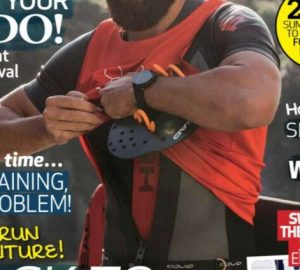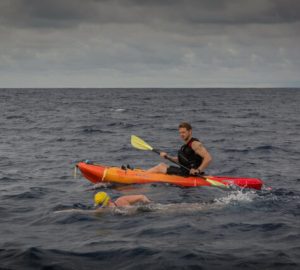A never-ending swimming journey
Often in swimming we set goals with a clearly defined end point: complete an open water mile, swim the length of a lake, or beat a target time, for example. The outcome is binary. You either achieve the goal, or you don’t.
Developing your swimming technique is different, at least as far as I can see.
A swimmer, somewhat despairingly, once asked me: “at what point can I stop worrying about technique and just get on with swimming?”
One answer might be: “any time you like.” However, once you stop consciously thinking about technique at best your swimming development will stagnate. More likely is that your technique will slowly deteriorate as you slip into bad habits. If you give up on technique, your only way to get faster (or even maintain your speed) is to get fitter – and that’s both hard work, and limited. An unfit swimmer with great technique is usually faster than a fit swimmer with poor technique.
The answer I prefer is: “never.”
I’ve yet to meet a swimmer who claims to have perfect swimming technique. I’ve seen some that look pretty perfect, but I’m confident that if you asked them they would identify things they think could be improved, or their coach could. I’m also confident that our ideas about what constitutes perfect technique will continue to evolve and develop as we learn more about swimming.
I actually find this quite exciting rather than depressing.
The likelihood is that those of us who have never been elite level swimmers have huge potential to improve through better technique even as we get older and our fitness and strength declines. I know this through my own experience. Over longer distances, I can swim significantly faster now than 30 years ago.
Improving technique is a cyclical rather than linear process. It’s also fascinating because changes you make in one part affect others – sometimes positively, sometimes not. This means, for example, that for a while you might work on ‘fixing’ your kick. You reach a stage where you’re happy with that so you change your focus to another component of your stroke. After you’ve worked on this you may find there are further refinements you can make to your kick, changes that would not have been possible until you addressed another element, such as the timing of your catch. You start with big changes and then move on to work on the details.
I’ve worked with and taken advice from many coaches over the years, including several whose names you’ll see within the pages of H2Open, such as Dan Bullock from Swim for Tri, Fiona Ford from Triathlon Europe and Tracey Baumann, a TI coach who runs Swim Solutions.
A few years ago I assumed I’d reached a plateau in swim performance. I felt as fit as I’d ever been in my life and I’d eliminated a lot of obvious technique flaws. I swam a set of lifetime personal bests at the ASA Masters National Championships. I then had to take a few months away from swimming due to injury so my swim times slowed considerably. Since then I’ve had regular (about once every three to four months) video analysis technique sessions with Tracey in her endless pool. Each time we’ve identified a focus point and I’ve gone away and practised. It’s been an incredible journey of swimming self-discovery and made a big change in the way I swim and think about swimming.
At the same time I’ve been attending Fiona’s weekly CSS-based training sessions as well as swimming around three times a week with my local masters club (Teddington) so my fitness is good.
The result: two weeks ago I swam 400m faster than I’ve ever done in my life.
However, it’s not just about the speed. There will at some point be a limit to how fast I swim but I know now that won’t mean the end of my swimming journey. There will always be improvements and refinements to make and new things to learn to make me more efficient and comfortable in the water, even if my fitness doesn’t allow me to swim so fast. Instead of becoming faster, the aim might become to minimise the rate at which I slow down with age. With the FINA points system (probably the subject of another article) there’s a means to measure if you’re still improving in relative terms for your age even as you slow down.
It’s great to have goals you can aim towards and tick off as you complete them, but they can leave you with a feeling of “what next?”. Improving your swimming technique is not like that. You can’t fix it and move on. Instead you can only spiral in towards perfection. Knowing that you’ll never reach the end point is actually part of the joy.








